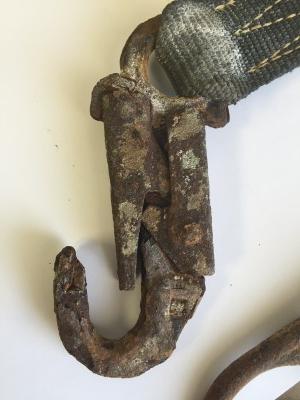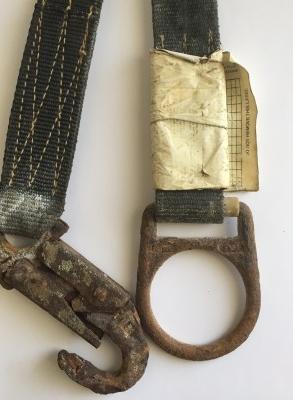When Should I Replace My Lanyard?
We recently received an email about the useful service life for lanyards. The client was confused because the service life for PPE isn’t clearly spelled out in the OSHA regulations or in ANSI standards. So how long can you expect a lanyard to last, and when should you replace it?
If you scour OSHA and ANSI language on this topic, you’ll find guidance, but not the black and white answers our client hoped to find. OSHA 1926.502 requires inspection “prior to each use for wear, damage, and other deterioration, and defective components shall be removed from service.” The ANSI A10.32-2012 standard is only slightly better: “Fall protection equipment shall be removed from service upon evidence of defects, damage or deterioration; once it has been subjected to impact loading; or upon expiration of the manufacturer’s specified service life, whichever comes first.”
In many instances, removing the lanyard from service upon expiration of the manufacturer’s specified service makes sense. That said, the condition of your PPE is more important than age. Your manufacturer may recommend replacing the lanyard every three years, but PPE used in a highly corrosive environment wears out sooner. A seldom used three or four-year-old lanyard may have remaining service life. Our best advice is to inspect lanyards visually prior to each use and have the qualified or competent person perform inspections annually.
Here are some quick pointers when visually inspecting a lanyard. Do you see….
- Ripped, frayed, cut, burnt, discolored, or soiled webbing, or paint on the webbing?
- An impact indicator suggesting a fall took place?
- Corroded or damaged snap hooks?
- Illegible tags?
Download a Sample Lanyard Checklist
Although the picture below illustrates an extreme case, it serves as a common sense reminder that condition should always trump the actual age of your PPE:
The lanyard shown above was attached to a horizontal lifeline shuttle. The snap hook was so badly rusted that a hammer was needed to open the gate. You also see clear indications of pitting.
The tag is another reason this lanyard would fail inspection. Most of the tag is illegible, and nobody ever bothered to record when the PPE went into service. In fact, the inspection history has never been filled out. To our earlier point, this lanyard has been used in a corrosive environment and may, in fact, be less than several years old. We just don’t know. What we do know is that this lanyard is no longer safe–and it could create a false sense of security. A worker could tie off using this lanyard, but what would happen in the event of a fall? The financial impact of PPE failure far exceeds the cost of its replacement.
Chances are good your lanyard is in much better condition than the one shown above, but you need to remember that your fall protection system is only as good as the PPE making the connection between your body harness and the anchor point. Trying to get a few extra years of service life out of a lanyard isn’t just ill-advised—it can be deadly. To learn more about PPE inspection, or to request an inspection of your PPE, contact the safety experts at Diversified Fall Protection for further assistance.
Schedule an assessment with Diversified Fall Protection
Contact Us to request a fall safety review

b-1.jpg?width=1368&height=1340&name=Rail%20(175)b-1.jpg)



